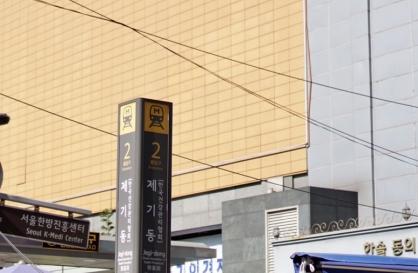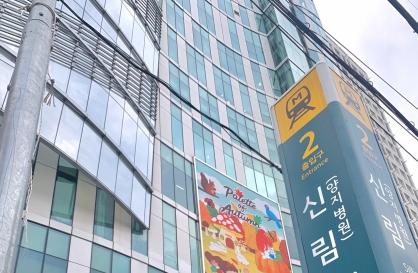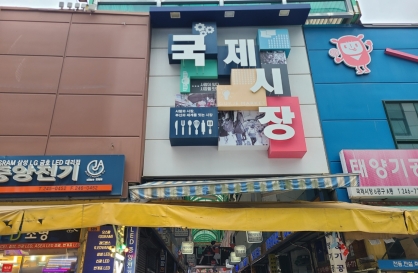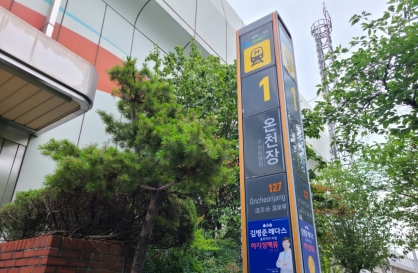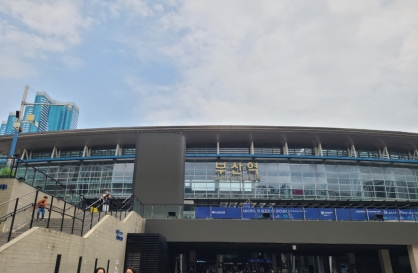Most Popular
Subway Stories
[Subway Stories] Subway music gains newfound interest
Metro melodies evoke memories of Seoul among foreign visitors; composers emphasize power of music
By Choi Jae-heePublished : April 22, 2023 - 16:01
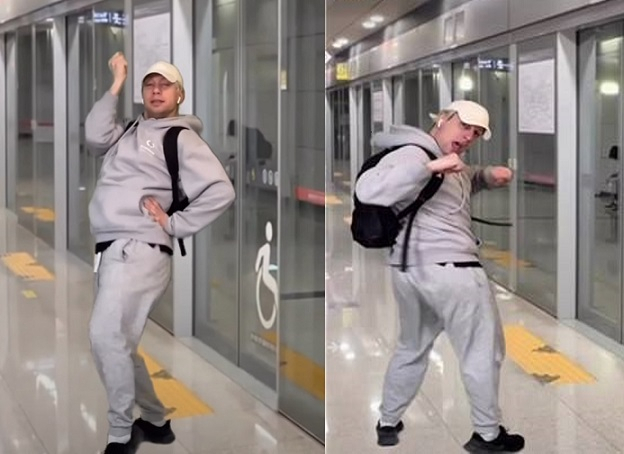
As the train rolls toward the platform, a familiar tune begins to play. An announcement, first in Korean and then in English, follows soon after.
It's a simple melody, yet one that is instantly recognizable to not just Seoulites but anyone who has spent some time in the city. It is the sound of the Seoul subway.
Recently, it seems there has been a newfound appreciation for the subway platform music.
Jonah Aki, an American choreographer who has lived in Seoul for a decade, owes much of his recent fame to it.
A video of himself dancing to Seoul subway jingles uploaded on TikTok and Instagram earlier in March gained more than 5 million views in total, bringing him under the media spotlight in recent weeks.
“(The jingles) are iconic and very unique to Seoul. I’m from Los Angeles where most people don’t use the metro system. I don’t think they have subway music like Seoul. If I remember correctly, it’s just a basic chime,” Aki told The Korea Herald.
“Since I’m a dancer, I usually move my body to any kind of song. After I started making videos for (social media), I thought, ‘I have to make one for Seoul subway.'”
Aki made the video by combining two separate clips -- a video of him dancing and another of an approaching train. Recently, he filmed a new dance video at a subway station.
“I asked the Seoul Metro for permission and they said I could do it in the station. I chose Noksapyeong Station not only because it’s close to my house but also because there aren’t that many people, and I didn’t want to bother anyone while they’re traveling,” he said.
The American dancer, who has worked with many K-pop artists, including girl group (G)I-dle and Brown Eyed Girls, was surprised by the explosive response from locals after sharing the dance video.
“I actually get recognized in public these days because of that video. I hear people around me saying, ‘I think that’s the subway dance video guy.’ I’ve gotten a lot of new followers too, so I am very thankful for everyone’s positive reactions,” he said.
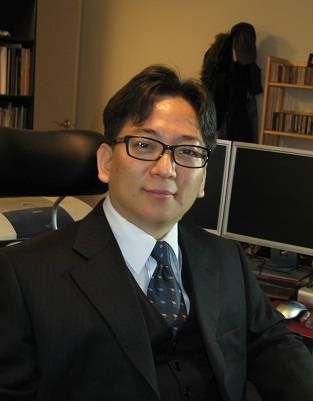
Choi Kwi-sop, the composer behind the subway song, says it is thanks to people like Aki and their viral content that his seven-second work enjoys renewed interest from the public.
“Subway stations overseas also have their own notification sounds, but those of Seoul subway contain more musical elements,” explained the 57-year-old chief of Choice Entertainment, a performance production company.
There are actually two different tunes played at Seoul subway stations to inform of an incoming train. One that sounds like a ringtone notifies the approaching northbound trains, while the other trumpet sound is for those southbound.
When Choi began composing them in 2011, commissioned by Seoul Metro, his main objective was to create something that is fun and easy to listen to.
Before, the subway operator had been playing something like a warning alarm mainly to alert passengers about the incoming train so they step away from the train tracks for their safety. But as automated platform screen doors were introduced in the mid-2000s, there was growing demand for “music with less emphasis on functional aspects,” Choi added.
To make the jingle for northbound trains sound cheerful and upbeat, the composer added an “arpeggio,” a chord played one note at a time, rather than all together.
He wrote the one for southbound trains with trumpet sounds to conjure up images of festivals and parades.
“At the time when I was asked to compose seconds-long subway melodies, as a composer, I was so worried that people, especially those in the music industry, might despise on them. But now I feel rewarded because they became iconic sounds of Seoul's subway,” said the composer, who is best known for “As time goes by,” an '80s hit song sung by Choi Ho-Seob, his older brother. His other works are mostly pop ballads and musical numbers.
Choi noted the power of music in promoting a city’s image.
“Even after (tourists) return to their home countries, Seoul's subway music may sometimes come to mind, bringing back fond memories of the city. This is the power of music. Even a short subway jingle can become a special memory for some tourists as well as an opportunity to become more familiar with Korea,” he said.
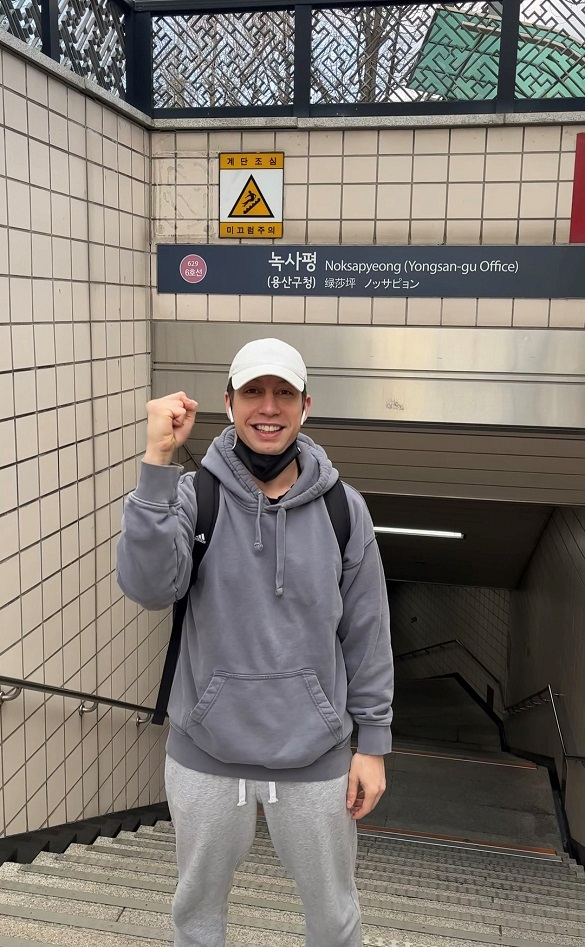
Feel gugak beats on subway
Another iconic sound of the Seoul subway is the background tunes for transfer announcements inside trains.
For 14 years since 2009, part of “Eolssiguya,” a 36-minute gugak-style song, had flowed through Seoul’s subway trains when approaching transfer stations.
Introduced in March 2009, which was the government-designated "Korea Visit Year," the long-loved interchange song was the first piece themed on the traditional Korean music.
It was made with only Korean instruments based on traditional rhythmic patterns like the “jajinmori” beat, played in the fast 12/8 time, used to evoke a cheerful mood, the “Eolssiguya” composer Kim Baek-chan told The Korea Herald.
Featured instruments include the gayageum (12-stringed zither), sogeum (small bamboo transverse flute with three kinds of holes) and haegeum (two-string Korean fiddle).
"I focused on creating traditional and upbeat music, maintaining the Korean-style musical expression and melody, without resorting to fusion music,” Kim said.
“As a composer of traditional Korean music, it has been a great pleasure and honor to see gugak become a part of people’s everyday life. I am truly grateful for their love and support for 'Eolssiguya.'”
Earlier in January, Seoul Metro bid farewell to "Eolssiguya" after 14 years, and introduced a new song “Good Harvest.”
The 1 minute 9 second song is based on the folk song “Good harvest has come,” which has been handed down in the Seoul and Gyeonggi Province areas. The changeover took place in a sequential manner on Subway Line Nos. 1 through 8 operated by Seoul Metro, between Jan. 16 to Feb. 1.
The switch was to “give a sense of liveliness and energy to citizens as they prepare to resume their daily lives with the end of the pandemic in sight,” according to Seoul Metro.
"Good Harvest" was selected as the new interchange music through an online poll in October last year where it competed with four other gugak songs. It received the highest -- 26.53 percent -- votes.
“I reinterpreted the original song ‘Good harvest has come’ by modernizing it with instruments such as piano, drums and bass, and changing the 'gutgeori' rhythm consisting of 12 beats to that of a 4/4 time signature,” the song’s composer, Park Gyeong-hoon, said in an interview.
"I placed emphasis on creating a melodic line that is traditional yet simple and attractive. I often take the subway. I feel proud every time I listen to it,” he said.
“Good Harvest” was one of his music pieces that combine various music genres and instruments to make gugak more accessible to the general public, Park added.
Both composers have high hopes for the wider use of gugak in public spaces to promote the nation’s cultural heritage.
“It would be great if more traditional Korean songs are used as background music in other types of public transportation like buses so that gugak could gain more popularity in various fields,” Kim said.
Park shared Kim’s view saying, "The subway seems like the face of a city, and if some are greeted with bright traditional Korean music as their first impression of the city, they would feel closer to gugak.
"In our daily lives, gugak can be enjoyed in various ways, such as a background music in public transportation, school bell music, mobile phone ringtones and even various TV show soundtracks.”



![[Exclusive] Korean military set to ban iPhones over 'security' concerns](http://res.heraldm.com/phpwas/restmb_idxmake.php?idx=644&simg=/content/image/2024/04/23/20240423050599_0.jpg&u=20240423183955)

![[Graphic News] 77% of young Koreans still financially dependent](http://res.heraldm.com/phpwas/restmb_idxmake.php?idx=644&simg=/content/image/2024/04/22/20240422050762_0.gif&u=)



![[Pressure points] Leggings in public: Fashion statement or social faux pas?](http://res.heraldm.com/phpwas/restmb_idxmake.php?idx=644&simg=/content/image/2024/04/23/20240423050669_0.jpg&u=)



